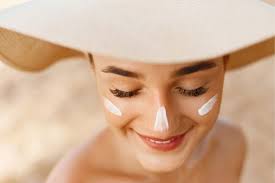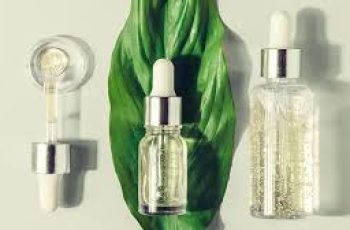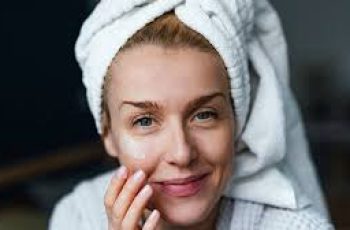
Can You Still Get Enough Vitamin D If You Wear Sunscreen Every Day?
Wearing sunscreen can block UVB rays, which the body uses to naturally produce vitamin D.
Experts say that wearing sunscreen has little to no effect on vitamin D absorption and does not cause vitamin D insufficiency.
How much vitamin D you get from the sun depends on many factors, including your skin color, the weather, and the amount of time you spend outdoors.
Using sunscreen is a critical part of staying safe and healthy during the summer—but can protecting your skin make it harder to get the vitamin D you need?
Vitamin D is an essential nutrient that builds healthy bones, enables nerves to carry messages between the brain and body, and supports the immune system. Most people get the vitamin D they need from their diet and from the sun.1
In fact, when your skin is exposed to sunlight—particularly ultraviolet B (UVB) rays—the body uses it to make vitamin D naturally, explained Kellie Reed, MD, a dermatologist at Westlake Dermatology in Texas, told Health.
UVB rays from the sun interact with a protein called 7-dehydrocholesterol (7-DHC) in the skin, which sets off a process that converts the energy into vitamin D3, the active form of vitamin D, Reed explained.2
But exposure to ultraviolet rays can also have some unpleasant effects on the body—namely, sunburn. And with sunburn being a strong predictor of developing skin cancer later in life, it’s understandable why experts recommend people wear sunscreen or take other precautions to shield their skin from the sun.34
However, because UVB rays are implicated in both positive and negative processes in the body, are you missing out on a key source of vitamin D when you use sunscreen every day? Here’s what experts have to say.
Does Wearing Sunscreen Block Vitamin D Absorption?
Although wearing a broad-spectrum sunscreen helps block UVB rays, “sunscreen has little to no impact on vitamin D [levels],” Robert Den, MD, a radiation oncologist and chief medical officer of Alpha Tau Medical, told Health.
In fact, ample research has shown that sunscreen use and vitamin D deficiency are not linked, including one study that found regular sunscreen users were not deficient as compared to people who don’t use sunscreen.2
“This could be because no matter how much sunscreen you use or how high the SPF, some of the sun’s UV rays still reach the skin,” Reed explained. “For example, an SPF 30 keeps out 97% of UVB rays with perfect application and reapplication.”
The small amount of UVB rays that do reach the skin should be enough to stimulate some vitamin D production. “It does not take much,” Reed said.
On top of that, people rarely apply their sunscreen correctly, she added. Ideally, you should apply an entire ounce of sunscreen to cover exposed skin, with reapplication at least every two hours, Reed said.
“Most people don’t use [sunscreen] judiciously and cover their skin in thin amounts, so it’s unlikely to prevent absorption,” Den explained.
Even those who are diligent about using sunscreen every day will still likely experience some unprotected exposure to the sun, such as getting in and out of the car. These small bursts of sunlight exposure can still contribute to vitamin D synthesis, Lauren Penzi, MD, a dermatologist with MDCS Dermatology in New York, told Health.
How Much Vitamin D Do You Actually Get From the Sun?
The amount of vitamin D you can get from the sun depends on several things, including your age, skin color, when you go outside, and more, Reed said.
For one, people with darker skin usually make less vitamin D when their bodies are exposed to sunlight. Older people and those who tend to wear clothes that cover most of their bodies may also absorb less vitamin D from the sun.1
When you tend to be outside can also play a role. Many studies “show that the body is most efficient at making vitamin D at noon,” Reed added.56 UVB rays tend to be strongest around this time—the sun’s rays peak between 10 a.m. and 4 p.m.7 People might not get as much vitamin D from the sun if they’re not outside during these hours.
Environmental factors such as clouds and air pollution might also affect the amount of vitamin D a person absorbs from the sun.1
Though vitamin D absorption from sunlight changes depending on each individual, it’s important to note that most people can obtain sufficient vitamin D from their diet and supplements, Den said.
How to Optimize Your Vitamin D Absorption Safely
It’s not a good idea to skip using sunscreen to get vitamin D, especially since there has been “no proven link of sunscreen and vitamin D deficiency,” Reed reiterated.
In fact, not using sunscreen can result in severe skin damage or skin cancer, which affects more than 5.3 million people in the United States annually, Den said.8 Plus, prolonged exposure to UV rays can lead to skin dryness, burns, and other issues, he added.
“It’s excellent to spend time outdoors and stay active, but remember to protect your skin with sunscreen,” said Den.
However, that doesn’t mean that people should put vitamin D on the back burner. For most adults between the ages of 19 and 70, 600 international units (IU) or 15 micrograms (mcg) is the daily recommended intake of vitamin D, but it’s estimated that as many as 22% of Americans have a moderate deficiency, and aren’t meeting these thresholds.91
A blood test can determine if you’re deficient or at risk of deficiency.1 If that’s the case, “ten to 15 minutes of unprotected sun exposure on the face, arms, or legs a few times a week can be enough to maintain adequate vitamin D levels without significantly increasing the risk of skin damage,” said Penzi.
A study done in the United Kingdom found that just 13 minutes of midday sunlight exposure in the summer three times per week was enough to maintain healthy vitamin D levels among white adults, Reed added.10 But again, people with darker skin usually need longer exposure to sunlight to get similar amounts of vitamin D.
In addition to getting vitamin D from sunlight, you can also obtain it through daily supplements, which are widely available at most pharmacies, Den said. You can also boost your intake by adding certain fortified foods to your diet—including dairy milk, plant-based milk, and orange juice—as well as foods naturally rich in vitamin D, such as salmon, tuna, and mushrooms.1
“Most importantly, consult your physician to check your vitamin D levels and determine the best approach for you,” Den said.


